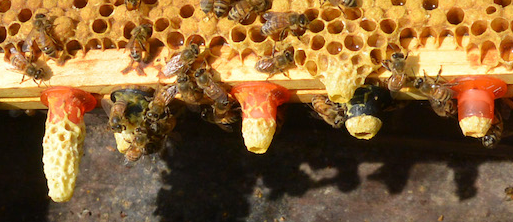A quick update about the current set of results. The hive that has the queen cups-only frame has queen cells, but the bees also started drawing comb between the cups. (And the queen was laying in them.) That tells me that they now want worker brood and not queen brood, so I released her back into the hive, to rebuild the population. I strongly suspect that this hive is no longer primed to swarm.
The total queen cups charged in this experiment: 11 with larvae and another 6 with eggs. I caged the queen with this frame on May 7; it took a while to produce these queen cells. (Commercial grafting techniques would have produced a full frame of queens, all of the same age and size, in about a week instead of two.)

The fully capped queen cells are not what I’d call gorgeous – they seem rather small, around 25-26mm in length (something that I’ll do a more thorough literature search on to compare).
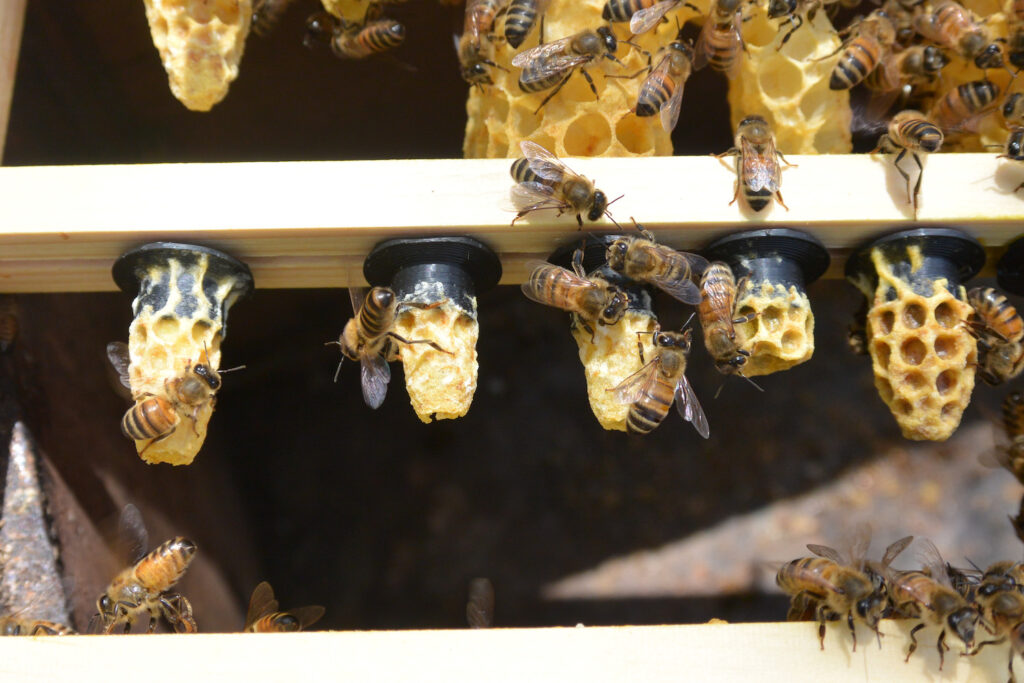
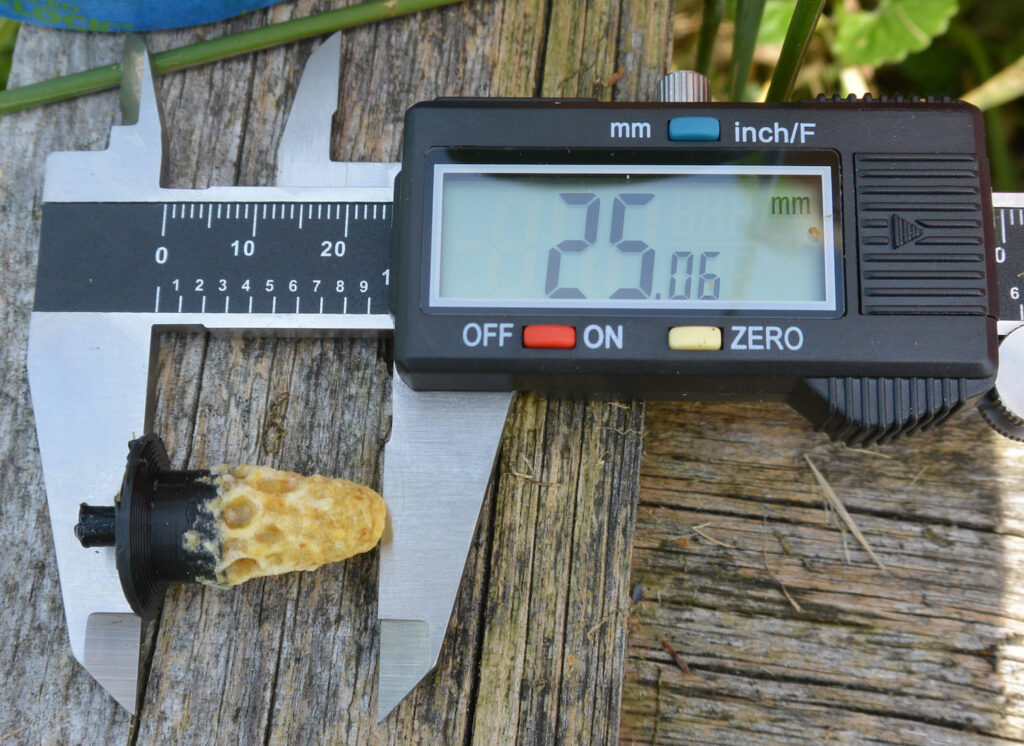
This frame was added to its hive on May 8. It produced 10 queen cells out of 20 cups offered. The cells directly under the brood are all nicely filled out, with apparent disregard for the type of queen cup I offered. Only one is charged in the bottom row.
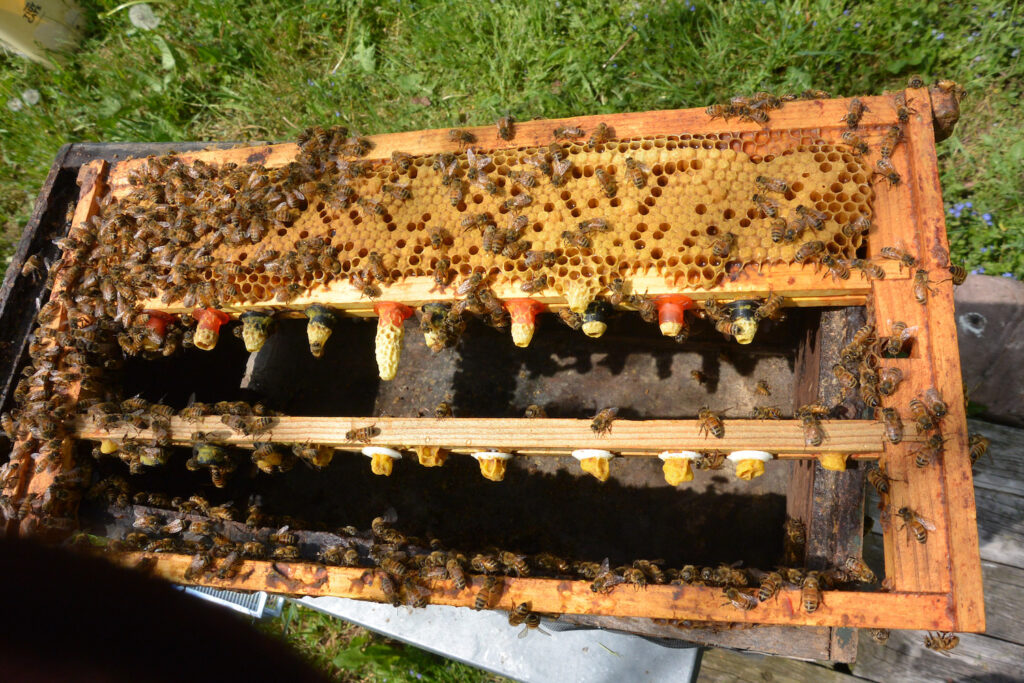
This frame has only one capped cell at this stage, but it’s a beauty:
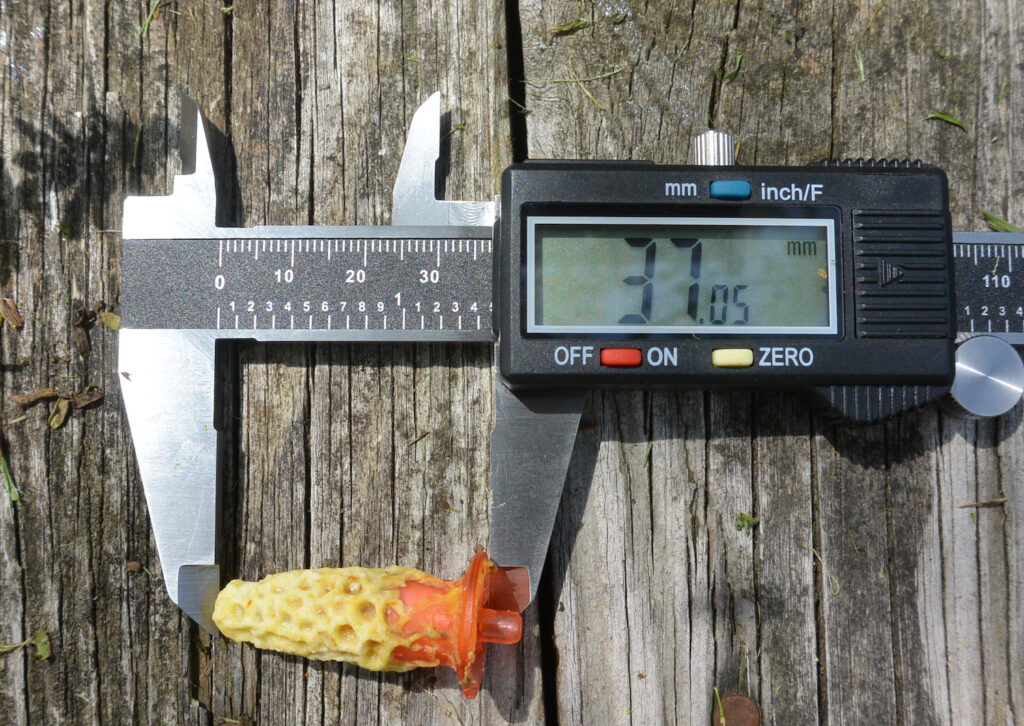
I put these frames into a different, queenless, box with a lot of nurse bees (a cell finisher) to cap of the rest of the cells. The five capped ones are in cages, and tucked into a hive to incubate them. I want to make sure they hatch before finding them new homes.
I’ll be taking these observations and lessons and refining my approaches for the next round of trials. I am pushing two more hives to the swarm point, as well as a small nucleus box, to see what they’ll do for me.
 This material is based upon work supported by the National Institute of Food and Agriculture, U.S. Department of Agriculture, through the Northeast Sustainable Agriculture Research and Education program under subaward number FNE24-102. Any opinions, findings, conclusions, or recommendations expressed in this publication are those of the author(s) and do not necessarily reflect the view of the U.S. Department of Agriculture.
This material is based upon work supported by the National Institute of Food and Agriculture, U.S. Department of Agriculture, through the Northeast Sustainable Agriculture Research and Education program under subaward number FNE24-102. Any opinions, findings, conclusions, or recommendations expressed in this publication are those of the author(s) and do not necessarily reflect the view of the U.S. Department of Agriculture.
